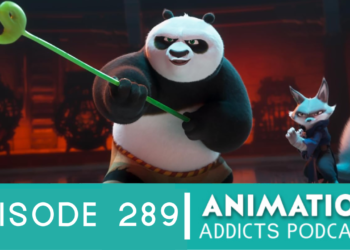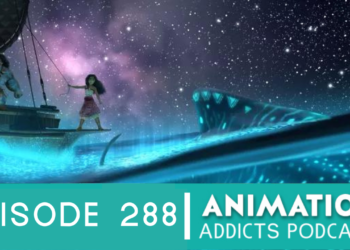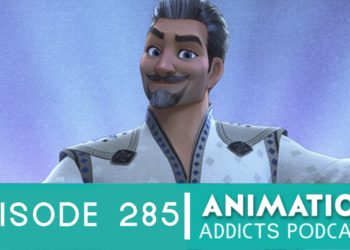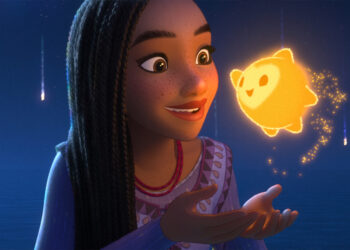Recently a new series of Looney Tunes Cartoons debuted on the HBO Max streaming services to rave reviews including my own. I loved the manic energy and fast-paced slapstick humor and one of the things that helped make the jokes works was the well-timed energetic music. So you can imagine I jumped at the chance to talk with the series composer Carl Johnson. Not only did he write for Looney Tunes but has done many of the most iconic animated shows and movie scores over the course of his career. It was a privilege to get to learn more about him and his process for creating music for the animation we love.
Please introduce yourself and tell us what inspired you to become a composer?
I never took music seriously growing up. I took piano lessons because I had to and played trombone in school bands because it was fun, and all my friends were doing it. I never considered doing music as a career and certainly never considered being a composer. Eventually, I found that I enjoyed it more and more and started spending more focused time practicing. When I went to the University of Kansas they offered me a trombone performance scholarship (because they needed 32 trombones for the first four rows of the marching band), and I got some exposure to serious music study.
I started taking music theory classes for fun and found that I really took to it and enjoyed it. When I switched my major to music theory I had no idea where that would take me or what I would do with it. It wasn’t until the summer before I graduated, while working in All-American College Band at Disneyland, that I was introduced to film music as a career and considered the possibility of becoming a composer.
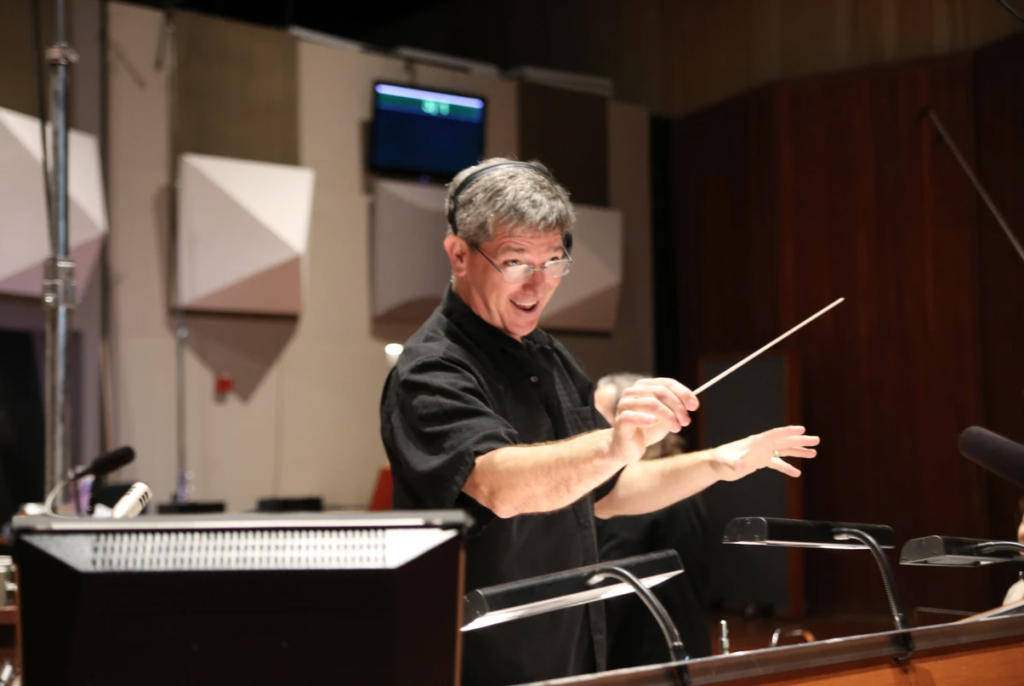
What’s the process like writing music for an animated series? You’ve done so many. Do you get your cues from the director or bring the music to him?
Usually, the first thing that happens is the composer sits down with the director and the creative team for a meeting called a “spotting” session, where you identify which places in the film need music and what kind of music should go there. Ideally, the animation is close to complete and it’s the composer’s job to fit the music to the picture. This meeting is often a place to brainstorm ideas of what kind of music would work and what kind of emotions the filmmakers want to have conveyed. Sometimes the filmmakers have put together a temporary music track, or a “temp track,” to use as a guide. All of which is to give the composer a creative place to start from when beginning composition of the music.
You’ve worked on some classic animated shows like Batman: The Animated Series and Animaniacs. Is it challenging to write for such different but classic shows?
Yes, it’s important to keep in mind who you’re working for! Every show has its own “voice” and every studio has its own traditions. What’s appropriate for a Looney Tunes cartoon wouldn’t be appropriate for an action series. Similarly, what’s appropriate for a Disney project wouldn’t necessarily be right for a Warner Brothers project. My mentor Rich Stone said, “In a Disney film when the characters get emotional, you hear violins. In a Warner Brothers film, when the characters get emotional, a safe drops out of the sky!”
Piglet’s Big Movie you worked with Carly Simon for the songs. What’s that like working with a collaborator for a film?
Unfortunately, I didn’t get to work with Carly Simon directly on Piglet’s Big Movie. She had written the songs long before I was hired. In an animated feature, the songs are usually written while the script is being written. The composer for the underscore isn’t hired until many months later when the animation has been finished. At that point, it was my job to incorporate the melodies from her songs into my underscore to make the whole thing sound like a unified work. I did get a call from her as we were mixing the score and she said how pleased she was with how it was all sounding. That was the closest I got to meeting her!
What do you love most about animation?
I think what I love most is how a simple variation in a character’s pose or expression can make an enormous difference in what they are communicating. I’m constantly amazed at what a skilled animator can do with the end of a line or a subtle eye movement. I hope that the music can accomplish the same kind of things with little changes in instrumentation and tempo. Animation is a very deliberate art-form. You don’t have the luxury of letting the camera roll and catching an actor’s improvisations. Every frame has to be laboriously imagined and created. Similarly, every note of music has to be considered and carefully placed. It’s a lot of decision making – it’s exhausting, but worth it when you see and hear the final product.
Did you want to pinch yourself getting to work on new Looney Tunes Cartoons?
Absolutely! I vividly remember watching Bugs Bunny cartoons as a kid. Then as a young adult, working on Animaniacs was one of my first jobs. Now, returning to traditional Warner Brothers cartoons feels like coming home. It’s a style I feel comfortable writing and working with these characters is a dream come true. When I had my first meeting with Pete Browngardt and Alex Kirwan, they described their vision of the series as being very “animator-driven.” Very little dialog, lots of sight gags – I said it sounded like a “dream gig!”
The movement is so fast-paced in these shorts. Was that a challenge for the music to keep up with the speed of the animation?
Yes, it’s mostly non-stop action. I’ve worked on projects where the music can be kind of stately and slow, but in this show, the music has to be fast or it isn’t funny. I sometimes just set the tempo at 180 beats per minute (that’s fast) and have the music race through the action along with the characters. Sometimes there’s just no solution other than a lot of notes.
Did you watch a lot of the old shorts to get your inspiration for the new score?
The creative team gathered together a library of all the classic Looney Tunes and Merrie Melodies shorts for reference. It has been very helpful. Often when we’re spotting a new episode they’ll reference the way music was used in one of the classic shorts. “You know, like the opening shot of ‘Baseball Bugs’ (1946 Friz Freling) where the crowd is waving their hats in silhouette. Make the music like that.” And we’ll look at the opening shot of “Baseball Bugs” and they’re exactly right and the music is perfect. I’m amazed at the encyclopedic knowledge these guys have of the classic shorts. It’s really inspiring.
Was there a particular short that was more challenging than the others?
They’re all challenging. Everybody on the show knows they’re working on something special and they’re trying to make it as good as it can be. I find the Roadrunner/Coyote cartoons to be the most challenging because there is no dialog to hide behind. The music has to be front-and-center and drive the story just as much as the visuals. I also find those to be the most rewarding cartoons when they’re finished.
Do you have a favorite character in the Looney Tunes Cartoons?
I definitely identify with Wile E. Coyote. He always has good ideas and plans them carefully, yet they always seem to fall apart in the end!
What do you hope people gain from watching these new shorts?
I hope people will get a sense of the animator’s craft. 3-D computer-generated animation is pretty and slick, but there’s something beautiful about the craft of two-dimensional, hand-drawn animation that you don’t get with CGI. When a character distorts making an expression or swishes out of view in a classic “zip” off screen, the intensity of the colors – there’s a special magic to it. I also hope people find some solace in simple humor. The classic Looney Tunes and Merrie Melodies shorts helped our world laugh through the Great Depression and several wars. Maybe these new Looney Tunes Cartoons can help us navigate through our current difficult times with a little more lightheartedness.


![[INTERVIEW] ‘Looney Tunes Cartoons’ Composer Carl Johnson](https://www.rotoscopers.com/wp-content/uploads/2020/06/9753-_Carl-Johnson-scaled-e1591737755557-750x375.jpg)
